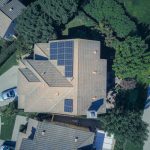Male Vandergrift
RV Maintenance: Seasonal Tips and Tricks
RV Maintenance: Seasonal Tips and Tricks 🚐
Owning an RV is a gateway to endless adventures and the freedom of the open road. However, just like any vehicle, your RV requires regular maintenance to ensure it runs smoothly and safely throughout the year. Whether you’re a seasoned traveler or a newbie to the RV lifestyle, knowing how to maintain your rig through the changing seasons is crucial. In this blog post, we’ll explore essential RV maintenance tips and tricks for each season, helping you keep your home-on-wheels in tip-top shape. Let’s dive in!
Table of Contents
- Spring: Time for a Fresh Start 🌸
- Summer: Keeping Cool and Safe ☀️
- Fall: Preparing for the Chill 🍂
- Winter: Hibernation and Protection ❄️
- Conclusion
- FAQs
Spring: Time for a Fresh Start 🌸
As the snow melts and flowers bloom, it’s time to shake off the winter cobwebs and prep your RV for a new season of adventure. Here are some spring maintenance tips:
Inspect and Clean
Start with a thorough inspection. Check for any damage that might have occurred during the winter months, such as cracks in the seals or leaks in the roof. Give your RV a good wash, including the undercarriage, to remove any salt or debris accumulated during storage.
Check Tires and Brakes
Inspect your tires for wear and tear. Look for cracks or bulges and ensure they are properly inflated. Don’t forget to check the brakes for responsiveness, as they are crucial for safety on the road.
Test the Systems
Before hitting the road, test all RV systems, including water, electrical, and gas. Ensure that everything is in proper working order and fix any issues you might find.
Summer: Keeping Cool and Safe ☀️
Summer is peak RV season, which means it’s time to ensure your rig is ready for those long, sunny days. Here’s how:
Maintain the AC
Your air conditioning unit is your best friend during the sweltering summer months. Clean or replace filters regularly and check for any leaks or blockages in the system.
Monitor Fluid Levels
Regularly check the engine oil, coolant, and transmission fluid levels. High temperatures can increase the risk of overheating, so staying on top of fluids is essential.
Keep It Cool
Invest in sunshades for the windows and park in shaded areas whenever possible. This will help keep your RV cooler and reduce the strain on the AC unit.
Fall: Preparing for the Chill 🍂
As the leaves change color, it’s time to prepare your RV for colder weather. Here are your fall maintenance tasks:
Seal and Protect
Check and reseal any exterior seams to prevent water from seeping in as the weather turns wet. Consider applying a protective wax coating to the exterior to add an extra layer of protection.
Inspect the Heating System
Before temperatures drop, test your RV’s heating system to ensure it’s functioning correctly. Clean or replace filters and listen for any unusual noises that might indicate issues.
Winterize the Water System
If you’re planning to store your RV for the winter, drain the water system or add RV antifreeze to prevent freezing and potential damage.
Winter: Hibernation and Protection ❄️
For many, winter means putting the RV into storage. Here’s how to ensure it stays protected during the colder months:
Cover It Up
Invest in a high-quality RV cover to protect against snow, ice, and UV damage. Ensure it fits snugly to avoid wind from getting underneath and causing damage.
Battery Care
Remove the battery and store it in a warm place to prevent it from freezing. Keep it charged periodically throughout the winter to maintain its health.
Rodent Prevention
Seal any openings and use rodent deterrents to prevent critters from finding a cozy home in your RV during the winter.
Conclusion
With the right seasonal maintenance, your RV can provide you with years of enjoyable travel and memories. By following these tips and tricks, you’ll ensure your vehicle is always ready for the next adventure, no matter the season. Happy travels! 🚐✨
FAQs
How often should I check my RV’s tire pressure?
It’s best to check your RV’s tire pressure every time you plan to hit the road, as well as monthly during storage.
What type of antifreeze should I use for winterizing my RV?
Always use RV-specific antifreeze, which is non-toxic and safe for your plumbing system.
How can I prevent mold and mildew in my RV?
Ensure proper ventilation, especially when cooking or showering. Use dehumidifiers and regularly clean areas prone to moisture build-up.
Is it necessary to cover my RV in the winter?
While not mandatory, covering your RV can protect it from harsh weather conditions and prolong its lifespan.
We hope this guide has been helpful. If you have more questions or tips to share, feel free to leave a comment below!
How to Choose the Best RV Insurance
How to Choose the Best RV Insurance 🚐
Embarking on a road trip adventure with your RV is an exhilarating experience. But before you hit the open road, ensuring your home-on-wheels is well-protected with the right insurance is crucial. In this guide, we’ll walk you through how to choose the best RV insurance, so you can travel with peace of mind. Let’s dive in!
Table of Contents
1. Understanding RV Insurance Basics
2. Key Coverage Options to Consider
3. Factors Influencing RV Insurance Rates
4. Tips for Finding the Best RV Insurance Deals
5. Conclusion
6. FAQs
Understanding RV Insurance Basics 📘
Before diving into the specifics, it’s essential to understand what RV insurance is. Essentially, RV insurance provides coverage for motorhomes, camper vans, and travel trailers. It protects you from financial losses due to accidents, theft, or damages.
RV insurance is similar to auto insurance but often includes additional coverages tailored to the unique needs of RV owners. These can include coverage for personal belongings, emergency roadside assistance, and even full-timer coverage for those who live in their RVs full-time.
Key Coverage Options to Consider 🛡️
When choosing RV insurance, consider the following essential coverages:
Collision and Comprehensive Coverage
This covers damages to your RV from collisions or non-collision-related incidents like theft, vandalism, or natural disasters.
Liability Coverage
Liability coverage protects you if you’re at fault in an accident that causes injury or property damage to others. It’s a must-have to shield your assets.
Personal Belongings Coverage
Since your RV is your home on the road, this coverage protects your personal items inside the RV against theft or damage.
Vacation Liability
If you’re using your RV for recreational purposes, vacation liability coverage protects you when your RV is parked at a campsite.
Full-Timer Coverage
For those living in their RV year-round, full-timer coverage acts like a homeowners policy, offering additional liability protection.
Factors Influencing RV Insurance Rates 💰
Several factors can affect how much you’ll pay for RV insurance:
Type and Size of RV: Larger, more expensive RVs generally cost more to insure.
Usage: How often and how far you plan to travel can influence your rates. Full-time RVers may pay more due to increased exposure to risks.
Driving Record: A clean driving record can help lower your premiums.
Location: Where you store your RV and the areas you travel to can impact your insurance cost.
Tips for Finding the Best RV Insurance Deals 💡
Here are some practical tips to help you find the best RV insurance at an affordable price:
Shop Around: Compare quotes from multiple insurers to ensure you’re getting the best deal.
Consider Bundling: If you have auto or home insurance, check if your provider offers a discount for bundling multiple policies.
Ask for Discounts: Look for discounts like safe driver, original owner, or membership in an RV club.
Review Your Coverage Annually: Your needs might change, so review your policy each year to ensure it still meets your requirements.
Conclusion 🎯
Choosing the best RV insurance doesn’t have to be daunting. By understanding the basics, considering key coverages, and shopping smart, you can find a policy that protects your adventures and your wallet. Safe travels!
FAQs ❓
What is the difference between RV insurance and auto insurance?
While both provide liability, collision, and comprehensive coverage, RV insurance often includes additional options like personal belongings coverage and vacation liability, catering specifically to the lifestyle of RV owners.
Do I need RV insurance if my RV is in storage?
Yes, it’s recommended to have comprehensive coverage to protect against theft, vandalism, or damage from natural disasters even when your RV is stored.
Can I insure my RV with my auto insurance policy?
Some auto insurers offer RV insurance as a rider to your existing policy, but it’s often better to have a standalone RV policy for more comprehensive coverage.
What should I do if I live in my RV full-time?
If you’re a full-time RVer, consider full-timer coverage, which offers liability protection similar to a homeowner’s policy for your RV.
We hope this guide helps you navigate the world of RV insurance with ease. Happy travels! 🌟
RV Life: Managing Waste and Recycling
RV Life: Managing Waste and Recycling 🚐♻️
Embracing the RV lifestyle is an adventure like no other. The freedom of the open road, the stunning landscapes, and the joy of minimalist living are just a few reasons why so many people are drawn to it. However, like any lifestyle, it comes with its own set of challenges, especially when it comes to managing waste and recycling. In this blog post, we’ll explore practical tips to manage waste responsibly while enjoying your RV adventures.
Table of Contents
1. Understanding Your Waste Management System
2. Efficient Waste Disposal Tips
3. Recycling on the Road
4. Composting: A Green Solution 🌿
5. Conclusion
6. FAQs
Understanding Your Waste Management System
Before hitting the road, it’s essential to familiarize yourself with your RV’s waste management system. Most RVs are equipped with three tanks: a fresh water tank, a gray water tank, and a black water tank. The gray water tank collects water from sinks and showers, while the black water tank is for waste from the toilet.
Regularly monitoring these tanks is crucial. Overflowing tanks can lead to unpleasant odors and environmental hazards. Invest in a reliable tank monitor to keep track of levels, and always empty the tanks at designated dump stations.
Efficient Waste Disposal Tips
Managing waste in a confined space requires creativity and discipline. Here are some tips to keep your RV waste-free:
🗑️ Use biodegradable bags for trash to minimize environmental impact.
↔️ Separate waste into categories: recyclable, compostable, and landfill.
📦 Opt for products with minimal packaging to reduce waste.
📏 Compress waste by crushing cans and breaking down boxes.
Recycling on the Road
Recycling can be a bit tricky when you’re constantly on the move, but it’s not impossible. Here’s how you can make it work:
🔄 Research local recycling facilities before you arrive at your destination.
📍 Use apps like iRecycle to find the closest recycling centers.
🗂️ Store recyclables in a separate bin until you find a recycling station.
🚫 Avoid single-use plastics by carrying reusable containers and bottles.
Composting: A Green Solution 🌿
For those passionate about sustainability, composting is an excellent option. You can start with a small composting bin designed for RVs or use a composting toilet. Here’s how to integrate composting into your RV life:
🌱 Collect food scraps and organic waste in a sealed container.
🪴 Use a portable composting system to break down waste.
🌍 Dispose of compost responsibly by checking local regulations.
Conclusion
Managing waste and recycling while living in an RV may seem daunting at first, but with a little planning and commitment, it can become second nature. By adopting sustainable practices, you’re not only keeping your mobile home clean but also contributing to the health of our planet. So, gear up, hit the road, and remember to leave no trace! 🌎
FAQs
Q1: How often should I empty my RV’s tanks?
A: It depends on usage, but generally, you should empty the gray and black tanks every few days or when they reach two-thirds full.
Q2: Can I recycle everywhere in the US?
A: Recycling facilities vary by location. It’s best to research each area you visit to understand local recycling options.
Q3: Is composting practical in an RV?
A: Yes, with the right setup and a commitment to regular maintenance, composting can be a practical and eco-friendly option for RVers.
Q4: What if I can’t find a recycling center?
A: If you can’t find a recycling center nearby, store your recyclables until you reach a location that offers recycling services.
RV Cooking: Easy Recipes for the Road
HTTP/1.0 429 Too Many Requests
Cache-Control: no-cache, private
Content-Type: application/json
Date: Sat, 31 May 2025 00:30:08 GMT
{“error”:”Error: Too many requests! Please try again later.”}
How to Plan a Cross-Country RV Trip
HTTP/1.0 429 Too Many Requests
Cache-Control: no-cache, private
Content-Type: application/json
Date: Fri, 30 May 2025 00:30:08 GMT
{“error”:”Error: Too many requests! Please try again later.”}
A Beginner’s Guide to Boondocking
HTTP/1.0 429 Too Many Requests
Cache-Control: no-cache, private
Content-Type: application/json
Date: Thu, 29 May 2025 00:30:08 GMT
{“error”:”Error: Too many requests! Please try again later.”}
The Best Portable Grills for RV Camping
The Best Portable Grills for RV Camping
There’s nothing quite like the experience of grilling under the open sky while camping in an RV. However, finding the perfect portable grill that suits your RV lifestyle can be a daunting task. Fear not! We’ve done the homework for you. Whether you’re a fan of charcoal, gas, or electric grills, this guide will help you discover the best options for your next adventure. 🌟
Table of Contents
1. Introduction
2. What to Consider When Choosing a Portable Grill
3. Top Portable Grills for RV Camping
– Gas Grills
– Charcoal Grills
– Electric Grills
4. Conclusion
5. FAQs
What to Consider When Choosing a Portable Grill
Before diving into grill options, it’s essential to consider a few key factors:
Size and Weight: Ensure the grill fits comfortably in your RV’s storage space without being too heavy to transport.
Fuel Type: Decide whether you prefer gas, charcoal, or electric, based on convenience and taste preference.
Cooking Surface: Consider how much cooking space you’ll need based on the number of people you’re serving.
Durability: Look for materials that can withstand the elements, especially if you plan to grill frequently.
Top Portable Grills for RV Camping
Gas Grills 🔥
Gas grills are a popular choice for RV campers due to their ease of use and quick heating. Here are some top picks:
Weber Q1200: Known for its durability and efficient heat distribution, the Weber Q1200 is compact yet powerful, making it ideal for RV use. Its foldable side tables add extra convenience.
Coleman RoadTrip 285: This grill offers a spacious cooking area and interchangeable cooktops, allowing you to switch between grill, griddle, or stove. It’s perfect for those who love variety in their meals.
Charcoal Grills 🌿
If you crave that authentic smoky flavor, charcoal grills are your best bet. Here are some of the best options:
Lodge Cast Iron Sportsman’s Grill: This durable cast iron grill is perfect for those who appreciate a traditional grilling experience. Its compact size makes it ideal for camping trips.
Weber Smokey Joe: A classic in the world of portable grills, the Smokey Joe is lightweight and easy to carry, providing that unbeatable charcoal flavor wherever you go.
Electric Grills ⚡
For those who prefer a cleaner grilling experience without the fuss of fuel, electric grills are a fantastic option:
Cuisinart CEG-980: This electric grill is compact and easy to set up, with a porcelain-enameled cooking grate that ensures even heat distribution. Perfect for those who have access to electrical hookups.
George Foreman GGR50B: Known for its versatility, this grill can be used both indoors and outdoors, making it a great choice for RV campers who want flexibility.
Conclusion
Choosing the right portable grill for your RV camping trips can significantly enhance your outdoor cooking experience. Whether you’re a gas grill enthusiast, a charcoal purist, or prefer the simplicity of electric grills, there’s something for everyone. Happy grilling and safe travels! 🚐
FAQs
1. What is the best fuel type for RV camping grills?
The best fuel type depends on your preference and convenience. Gas grills offer ease and speed, charcoal grills provide authentic flavor, and electric grills are clean and straightforward if you have power access.
2. How do I maintain my portable grill while camping?
Regular cleaning is crucial. After each use, clean the grates and remove any leftover ash or debris. For gas grills, check gas connections regularly to ensure safety.
3. Can I use a portable grill inside my RV?
It’s not recommended to use grills inside an RV due to safety and ventilation concerns. Always use grills outdoors in a well-ventilated area.
How to Install Solar Panels on Your RV
How to Install Solar Panels on Your RV: A Step-by-Step Guide 🌞
Are you ready to hit the open road with your RV while embracing sustainable energy? Installing solar panels on your RV is a fantastic way to power your adventures using the sun’s energy. In this guide, we’ll walk you through the process of installing solar panels on your RV, ensuring you have all the information you need to get started. Let’s dive in!
Table of Contents
1. Introduction to RV Solar Panel Installation
2. Why Choose Solar Power for Your RV? 🌍
3. Essential Equipment You’ll Need 🛠️
4. Step-by-Step Installation Guide
5. Maintenance Tips for Your RV Solar Panels
6. Conclusion
7. FAQs
Introduction to RV Solar Panel Installation
Traveling in an RV offers freedom and flexibility like no other. But, it also means you need a reliable power source. Solar panels provide a sustainable solution, allowing you to enjoy off-grid living without the constant hum of a generator. Whether you’re a weekend warrior or a full-time RVer, solar power can transform your travel experience.
Why Choose Solar Power for Your RV? 🌍
There are numerous benefits to installing solar panels on your RV:
1. Eco-Friendly: Reduce your carbon footprint and rely on clean energy.
2. Cost-Effective: Save money on fuel and electricity over time.
3. Quiet and Peaceful: Enjoy the tranquility of nature without the noise of a generator.
4. Low Maintenance: Once installed, solar panels require minimal upkeep.
Essential Equipment You’ll Need 🛠️
Before you begin the installation process, gather the following equipment:
• Solar panels
• Charge controller
• Battery bank
• Inverter
• Mounting brackets and hardware
• Wiring and connectors
Having the right tools and materials on hand will streamline the installation process and ensure a successful setup.
Step-by-Step Installation Guide
Let’s get to the heart of the matter: installing your solar panels. Follow these steps for a smooth installation:
1. Assess Your Power Needs 🔋
Determine how much power you’ll need based on your appliances and usage. This will help you choose the right size and number of panels.
2. Choose the Right Location on Your RV
Find a spot on your RV’s roof that receives maximum sunlight and has enough space for the panels. Ensure the area is clean and dry.
3. Install Mounting Hardware
Secure the mounting brackets to the roof, ensuring they are aligned correctly. Use sealant to prevent water leaks.
4. Mount the Solar Panels
Carefully place the solar panels on the brackets and fasten them securely. Double-check the alignment and stability.
5. Connect the Wiring
Attach the wiring from the solar panels to the charge controller, then connect it to the battery bank. Follow the manufacturer’s instructions for safe connections.
6. Install the Inverter
The inverter will convert DC power from the batteries into AC power for your appliances. Connect it to the battery bank and test the system.
Maintenance Tips for Your RV Solar Panels
To keep your solar panels in top condition, follow these maintenance tips:
• Regularly clean the panels to remove dust and debris.
• Check the wiring and connections for wear or damage.
• Monitor the battery levels and charge controller settings.
Conclusion
Installing solar panels on your RV is a rewarding project that offers long-term benefits. By harnessing the power of the sun, you’ll enjoy greater freedom and sustainability on your travels. With this guide, you’re well-equipped to embark on your solar-powered adventure. Happy travels! 🚐🌞
FAQs
1. How many solar panels do I need for my RV?
The number of panels depends on your power needs and available roof space. Most RVers start with 2-4 panels.
2. Can I use my RV’s existing battery for solar power?
Yes, but it’s recommended to use a deep-cycle battery designed for solar energy storage.
3. How long do RV solar panels last?
With proper maintenance, solar panels can last 20-25 years.
4. Is it difficult to install solar panels on an RV?
With the right tools and instructions, many RV owners find the installation process manageable.
5. Can I use solar power during cloudy days?
Yes, but the efficiency will be reduced. It’s a good idea to have a battery bank to store excess energy for such days.
How to Install Solar Panels on Your RV
How to Install Solar Panels on Your RV: A Step-by-Step Guide 🌞🚐
Embracing the freedom of the open road in your RV is an exhilarating experience, but keeping your gadgets charged and your appliances running can be a challenge. Installing solar panels on your RV is a fantastic way to harness the power of the sun, ensuring you have energy wherever your adventures take you. Here’s a comprehensive guide to help you install solar panels on your RV, making your travels both eco-friendly and hassle-free.
Table of Contents
- Understanding Solar Power for RVs
- Choosing the Right Solar Panels
- Essential Tools and Materials 🛠️
- Step-by-Step Installation Guide
- Maintaining Your Solar System
- Conclusion
- FAQ
Understanding Solar Power for RVs 🌟
Before diving into the installation process, it’s crucial to understand how solar power works for RVs. Solar panels capture sunlight and convert it into electricity, which is then stored in batteries. This stored energy can power your RV appliances, lights, and gadgets. A typical RV solar setup includes solar panels, a charge controller, batteries, and an inverter.
Choosing the Right Solar Panels
Selecting the right solar panels is key to a successful installation. Here are some factors to consider:
1. Panel Type: Monocrystalline panels are efficient and space-saving, while polycrystalline panels are more budget-friendly.
2. Size and Wattage: Determine your energy needs to select panels with the appropriate wattage.
3. Flexibility: Flexible panels are ideal for curved RV roofs, but rigid panels are more durable.
Essential Tools and Materials 🛠️
Gather the following tools and materials to ensure a smooth installation:
🔧 Drill and drill bits
🔩 Mounting brackets and screws
🔌 Wiring and connectors
🔋 Charge controller and inverter
📏 Measuring tape and marker
Step-by-Step Installation Guide
Now, let’s get down to the nitty-gritty of installing your solar panels:
1. Plan Your Setup
Identify a suitable location on your RV roof for the panels. Ensure it’s free from obstructions and has maximum exposure to sunlight.
2. Install the Mounting Brackets
Secure the mounting brackets to your RV roof using screws. Use a drill for precision and ensure the brackets are aligned properly.
3. Mount the Solar Panels
Place the solar panels onto the mounted brackets. Double-check that they’re secure and won’t shift during travel.
4. Connect the Wiring
Run wiring from the solar panels to the charge controller. Use connectors to ensure a safe and efficient connection.
5. Install the Charge Controller and Inverter
Mount the charge controller inside your RV, close to the battery bank. Connect the inverter to convert stored DC energy into AC power for your appliances.
6. Test the System
Once everything is connected, test the system to ensure it’s working correctly. Check the charge controller’s display for charging status.
Maintaining Your Solar System
To keep your solar system in top condition, regularly clean the panels to remove dirt and debris. Check all connections periodically and ensure your batteries are in good health.
Conclusion
Installing solar panels on your RV not only enhances your travel experience but also promotes sustainable living. With this guide, you’re all set to embark on a solar-powered RV adventure, reducing your carbon footprint and enjoying the freedom of the road.
FAQ
1. How much solar power do I need for my RV?
The amount of solar power you need depends on your energy consumption. Calculate your daily wattage needs and choose panels that can meet those requirements.
2. Can I install solar panels on any RV?
Yes, most RVs can accommodate solar panels. However, the installation process may vary based on the RV’s design and roof structure.
3. Do I need professional help to install solar panels?
While it’s possible to install solar panels yourself, consulting a professional can ensure safety and optimal performance.
4. How long do RV solar panels last?
High-quality solar panels can last 20-25 years, providing long-term renewable energy for your adventures.
5. Is solar power enough to run all RV appliances?
Solar power can run most RV appliances, but high-energy devices like air conditioners may require additional power sources.
Now, you’re ready to transform your RV into a solar-powered haven! 🌞🚐
Top 10 RV-Friendly Cities to Visit in the USA
Top 10 RV-Friendly Cities to Visit in the USA
Exploring the USA by RV is an incredible way to see the diverse landscapes and vibrant cultures across the country. Whether you’re a seasoned road warrior or a newcomer to the RV lifestyle, finding cities that cater to RV travelers can make your journey smoother and more enjoyable. 🚐✨
Table of Contents
1. Introduction
2. Nashville, Tennessee 🎸
3. Sedona, Arizona 🌄
4. Charleston, South Carolina 🌊
5. San Diego, California 🌞
6. Denver, Colorado ⛰️
7. Portland, Oregon 🌲
8. Austin, Texas 🎶
9. Savannah, Georgia 🍑
10. Bar Harbor, Maine 🌅
11. Asheville, North Carolina 🍻
12. Conclusion
13. FAQs
Nashville, Tennessee 🎸
Known as the heart of country music, Nashville is a vibrant city with a rich history and a welcoming atmosphere for RV travelers. With numerous RV parks and campgrounds, you can easily find a place to park your home-on-wheels. Explore the lively music scene, indulge in Southern cuisine, and enjoy the local hospitality.
Sedona, Arizona 🌄
Sedona’s stunning red rock landscapes offer a breathtaking backdrop for any RV adventure. The city is well-equipped with RV-friendly facilities, making it a perfect stop for nature lovers. Don’t miss out on hiking the trails and witnessing the magical sunsets that Sedona is famous for.
Charleston, South Carolina 🌊
Charleston, with its historic charm and coastal beauty, is a must-visit for RV enthusiasts. The city offers several RV parks close to the beach, allowing you to enjoy both the ocean and the charming downtown. Stroll along cobblestone streets, savor fresh seafood, and soak in the Southern hospitality.
San Diego, California 🌞
With its perfect weather and beautiful beaches, San Diego is an RV-friendly city that promises a relaxing getaway. Visit the famous San Diego Zoo, take a surf lesson, or just relax by the ocean. The city has numerous RV parks that cater to different needs and preferences.
Denver, Colorado ⛰️
Denver is the gateway to the Rockies, offering a mix of urban and outdoor adventures. The city provides ample RV parking and camping options, making it a convenient stop for exploring Colorado’s natural wonders. Enjoy local breweries, art districts, and the stunning mountain backdrop.
Portland, Oregon 🌲
Portland is a quirky city known for its eco-consciousness and vibrant culture. RVers will find plenty of parks and green spaces to set up camp. Enjoy the city’s famous food trucks, visit the iconic Powell’s City of Books, and explore the beautiful nearby forests and waterfalls.
Austin, Texas 🎶
The live music capital of the world, Austin offers a lively atmosphere with a variety of RV parks just outside the city. Experience the vibrant nightlife, enjoy the local barbecue, and take in the eclectic culture that makes Austin unique.
Savannah, Georgia 🍑
With its historic squares and moss-draped oaks, Savannah is a picturesque destination for RV travelers. The city offers several RV-friendly spots, allowing easy access to its charming streets and historic sites. Don’t forget to try the iconic peach cobbler! 🍑
Bar Harbor, Maine 🌅
Bar Harbor is the perfect destination for those looking to explore Acadia National Park. The city offers RV parks with stunning views of the Atlantic Ocean. Enjoy fresh lobster, explore scenic trails, and take in the breathtaking coastal vistas.
Asheville, North Carolina 🍻
Asheville is known for its vibrant arts scene and craft breweries. Nestled in the Blue Ridge Mountains, the city offers numerous RV parks with beautiful views. Explore the Biltmore Estate, enjoy local eateries, and experience the unique mountain culture.
Conclusion
Traveling across the USA by RV allows you to experience the country’s diverse landscapes and cultures in a unique way. These RV-friendly cities offer a mix of urban excitement and natural beauty, ensuring a memorable adventure wherever the road takes you. Happy travels! 🌍
FAQs
1. What should I look for in an RV-friendly city?
Look for cities with ample RV parks, easy access to attractions, and amenities such as dump stations and hookups.
2. How can I find RV parks in these cities?
Online resources like RV Parky and AllStays can help you locate RV parks and campgrounds in any city.
3. Is it safe to travel by RV in these cities?
Yes, most of these cities are safe for RV travelers, but it’s always wise to research specific areas and park your RV in well-lit, secure locations.
4. Can I park my RV in city centers?
Parking in city centers may be limited, so it’s often best to stay in designated RV parks or campgrounds and use public transport or rideshares to explore urban areas.
5. What are the best times to visit these RV-friendly cities?
Spring and fall are generally great times to visit, offering mild weather and fewer crowds. However, each destination may have its peak season depending on local attractions and events.









